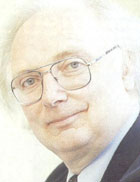2008 Spring Festival - Grand Shield: Test piece review - Vienna Nights
8-May-20084BR takes a much closer look at Philip Wilby's masterful treatment of Mozart.
 Vienna Nights – Philip Wilby
Vienna Nights – Philip Wilby
Philip Wilby’s subtitle for Vienna Nights is Fantasy on Mozart’s Piano Sonata in A, K.331. The word ‘fantasy’ can take on different connotations or expectations.
At the most obvious level the listener or performer might expect elements of arrangement or transcription. We might also reasonably expect some variations on the original material or some sort of paraphrase.
Philip Wilby has given us all these and much more. With Vienna Nights, Philip Wilby has presented a multi-layered tapestry of musical styles and symbols bound together by the strength of the concept, a depth of appreciation of the way Mozart’s music and imagination works and a supreme confidence in his own creative resources.
It is one of the comparatively few brass band works conceived as a test piece in which the elements of technical examination are subsumed within the idea of the music.
Texture
Splitting up the band into two choirs left and right of the timpani (as Wilby did in Revelation) gives every player a distinct role and moment of exposure, but crucially allows the composer to pile on layer after layer of texture without losing clarity.
The swirling opening music, which emerges like the start of a dream, is underpinned by a sustained theme on trombones and basses. This theme contains all 12 notes of the chromatic scale – thus taking us immediately into the dark and questioning music of the early 20th century – of the Second Viennese School and Schoenberg, Berg and Webern.
So the musical fantasy in Wilby’s imagination deepens. As the music takes more defined shapes, the simple, lilting theme of Mozart’s first movement emerges as if suspended in the air – the curtain of the imagination has risen to reveal Wilby’s favourite composer, and one whose depths are not always appreciated: ‘one of Mozart’s distinguishing features, and one that links him to later music, by Beethoven, Schubert, Mahler and Schoenberg, is the breadth of his musical vision.
Intellectual rigour
His music links intellectual rigour with ecstatic utterance and darker preoccupations. It is, perhaps, this shadow-laden side of his musical nature which gives his work a profundity often absent in the work if his contemporaries.’ Even in the theme, Wilby hints at this darker level by subverting the simple outlines with elaborations of his own.
The nine variations which follow take us on a roller-coaster of styles, images and virtuosity. The crucial aspect of performance is to project the wonderfully diverse characters of each variation without losing the sense of flow and continuity. Finding the right tempo is vital.
It would be all too easy for example to be over indulgent in the bluesy ‘Cafe Life’ variation and bring the momentum to a standstill. In Wilby’s dream-like fantasy we might imagine one of the tables at this Viennese cafe near the opera house occupied by Mozart, Mahler and Freud! Listen out too for the eloquent basso profundo of the Eflat bass a little later. There is dark and light in Wilby’s music.
The Scena and Notturno takes on a strong operatic countenance. The Scena is a collage of Mozart quotes, where in Wilby’s words, ‘each section of the band lays down a metaphoric rose to [Mozart’s] memory’.
Drama
Most dramatic of all is the famous chord from Don Giovanni which announces the vision of the ghostly statue. Wilby’s triple-forte realisation then seems to echo into our own time, with a series of dissonant chords and a reprise of the tone row with which the piece began.
Again Wilby is being symbolic: ‘Admirers of the Statue music...will recognise...the sense of reality which makes Mozart so relevant to the modern age and where he may link hands with other great Viennese thinkers.’ The Notturno movement is such a clever way of integrating the solo and duet elements of a brass band test into the fabric of the music.
Wilby was the first to ask the soloists to take a ‘standing role’ and while most ears will be on cornets and euphoniums to hear how elegantly the Wilby/Mozart idiom is delivered, the four tubas get their chance to shine as well.
Turkish
The finale takes the idea of Mozart’s famous Rondo Alla Turk and transforms it into brilliant counterpoint:
‘Ever since the Hapsburg-Ottoman Wars, which came to an end in the seventeenth century, Viennese composers have included “Turkish” elements in their music, not least in the use of certain percussion instruments. I have tried to add my own gloss to this tradition as, like Mozart’s last symphony, my score culminates in a breathless fugue.’
Ever since Vienna Nights was premiered at the British Open Championships for the Mozart 250th anniversary in 2006, the quality of the music, the formidable challenges is offers for all the players and the depth of Wilby’s inspiration were appreciated. Vienna Nights is one of the great brass band scores and has gone round the world.
Above all it is a sincere act of homage composed by a great Mozartian to ‘the world’s greatest composer and the city which fostered his work.’
Ed Armstrong















